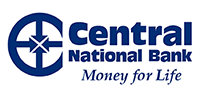
Do you feel confident that the safety measures you have in place are adequate to protect your business from cybercrime? Where do you have room for improvement? If you feel like now is a good time to look into it, here’s three places to start.
Debit Card & Credit Card Fraud
The most common area for fraud to occur is right at the register with your payments system. Take a look at the software and equipment you’re using. How old is it? Who has provided it to you? Are you certain it’s got the latest technology? If it’s bank-provided, ask your banker what additional steps you can take to keep your customer information safe. It’s also a good time to take inventory of the types of ACH data that is part of your business. How is that data, or information, collected, stored, transmitted and destroyed? Finally, is all of your customer data stored online or on a computer? Make sure you’re properly storing and destroying paper documents as well.
In addition to keeping your customer card information safe, it’s important to make sure you’re keeping your own account information safe. Don’t buy supplies from sources you don’t trust. It’s also a good idea to keep your personal banking information separate from your business accounts. That way, if you do have a security breach, the crooks can’t get everything you have all at once.
We published a blog article in July of 2017 with another tip. Check it out at: http://blog.centralnational.com/2017/07/keep-debit-card-information-safe/
Computers & Passwords
How old is your computer? Does it have virus detection software? Do you click “Update” when it tells you you’re due for an update? A few dollars paid out to a local software/computer expert could save you thousands, and a massive headache. All you have to do is make sure your systems are up-to-date. And if you don’t feel confident enough to ensure that, hire an expert.
It’s also a good idea to make your passwords hard to crack. It seems like common knowledge these days to coach people on using a secure password with a variety of letters, numbers and symbols, but that doesn’t seem to stop people from setting their passwords to “teddybear79”. Take a little advice from several reputable experts who’ve put together seven tips at: https://www.wired.com/2016/05/password-tips-experts/
Need some more cyber tips? Jump on over to our blog article that’s chock full of exactly that: http://blog.centralnational.com/2015/04/cyber-tips/
Your Employees
Lastly, your employees are sometimes the weakest link. Obviously you can’t make them follow the above guidelines; you can only do your best to make sure your systems and software are secure. The best thing you can do is educate them regarding the pitfalls of not maintaining your cybersecurity. And, at the end of the day, if they still can’t follow security protocol? Well, then maybe it’s time to make sure they have a little less access to all of the secure aspects of your business.
